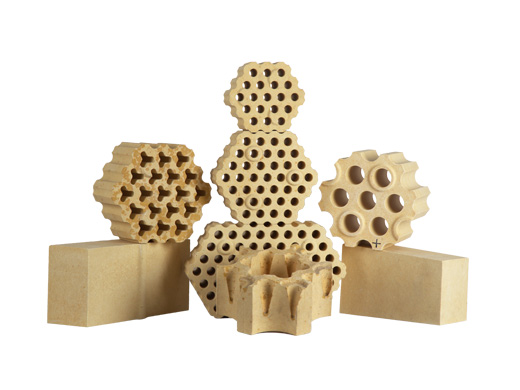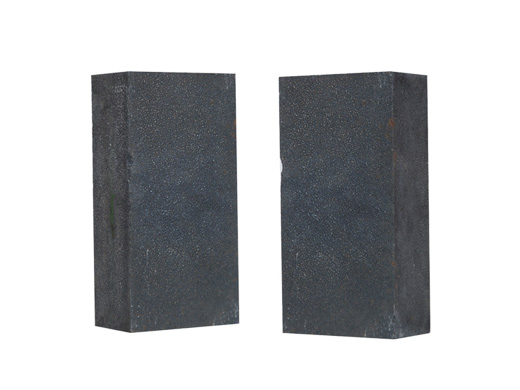Raw material for refractory materials: purification process of kaolin
Industry news | Refractory Wiki | Refractory news | Enterprise news |Kaolin, also known as "china clay," is a type of mineral clay that is commonly used in the production of porcelain. It is abundant in China and ranks third in the world in terms of production. The main components of kaolin are montmorillonite and kaolinite. It is widely distributed in China, particularly in regions such as Shanxi and Guangdong.

Improving the whiteness of kaolin is equivalent to purifying it, which involves removing impurities such as quartz and titanium minerals. Purified kaolin can enhance the quality of products made from kaolin and maximize the utilization of kaolin resources, resulting in better economic benefits for businesses. Currently, the main purification processes employed in the industry include froth flotation and chemical bleaching to remove organic impurities. Chemical bleaching is used to purify high-grade kaolin ore and obtain high-quality kaolin. However, based on data research, it is difficult to achieve high-quality kaolin products through a single purification process. Typically, multiple processes are combined in a unified flow. Below is a brief introduction to several kaolin purification processes.
1.Gravity Separation Purification Process
The gravity separation purification process mainly focuses on removing organic matter, manganese, iron, titanium, and other impurities to reduce their negative impact on whiteness and achieve kaolin purification. Centrifugal technology can be employed to remove impurities such as grit particles by exploiting density differences. Utilizing gravity separation for kaolin purification is effective, and using centrifuges for washing and screening can achieve the purpose of purifying and grading by removing impurities. It has significant practical value. However, to obtain kaolin products that meet the desired requirements, relying solely on gravity separation is challenging. In most cases, other processes such as leaching and calcination are necessary to achieve the final purification goal.
2.Magnetic Separation Purification Process
Magnetic separation is commonly used to remove weakly magnetic impurities such as limonite and hematite. Due to increased environmental monitoring by China's regulatory authorities, many companies have adopted magnetic separation as a means of kaolin purification. Magnetic separation is environmentally friendly, with no pollution and no need for chemical reagents, making it widely applied in various fields. Because magnetic separation technology can effectively remove weakly magnetic impurities in kaolin, it has achieved successful non-metallic mineral purification. Research indicates that many companies use SLon vertically pulsating high-gradient magnetic separators for purification and screening. Magnetic separators have also undergone improvements due to technological advancements, allowing for better control of rotating speed and minimizing secondary pollution caused by certain parts. It is believed that the development of magnetic separation technology will have a significant impact on improving the purification process of kaolin. Additionally, another promising equipment widely used in kaolin with high iron content is superconducting magnetic separators, which offer advantages such as high field strength and large production capacity. Experimental studies have shown that finer magnetic media and higher magnetic field strength result in better removal of iron. In the development and utilization of kaolin resources, high iron content often leads to lower quality. Therefore, successful kaolin purification relies on a combination of magnetic separation and other processes, emphasizing the importance of collaboration.
3.Leaching Process
The leaching process utilizes chemical reactions to dissolve and remove impurities from kaolin. One common leaching process involves acid leaching, where an acidic solution reacts with kaolin, converting organic matter, iron, and other impurities into soluble substances. The mixture is then separated and filtered to obtain purified kaolin. Acid leaching has shown good purification results for kaolin, but it requires careful control of leaching conditions and consideration of the environmental impact of waste solutions.
4.Calcination Process
The calcination process involves heating kaolin at high temperatures to remove moisture, organic matter, iron, and other impurities. This process is suitable for kaolin with high moisture content. Heating causes structural changes within the kaolin particles, leading to oxidation or volatilization of impurities. To prevent excessive calcination that may result in the loss of original structure and properties, it is necessary to control the appropriate calcination temperature and time.
In summary, the purification of kaolin usually requires a combination of multiple processes. Different processes effectively remove different impurities, thereby improving the whiteness and purity of kaolin. In practical applications, the selection of appropriate process combinations depends on specific circumstances to achieve the desired purification results.
Newest
- 2023-07-31
Properties of silicon nitride and its application in refract···...
- 2023-07-31
Properties of silicon nitride and its application in refract···...
- 2023-07-31
Properties of silicon nitride and its application in refract···...
- 2023-07-31
Properties of silicon nitride and its application in refract···...
- 2023-07-31
To explore the application of magnesia carbon brick in refra···...
Solution
- 2022-11-22
The technical requirements and production processes of fused···...
- 2022-09-06
Price Determinants of high alumina fire bricks...
- 2022-08-30
Technical performance and technology of silica mullite brick···...
- 2022-08-27
Refractory materials in various parts of the furnace and pre···...
- 2022-08-23
Magnesite chrome brick composition process classification...




